Making this pork roast is as easy as can be: Rub the pork with spices and cook it in the oven until the outside is browned and crispy and the inside is tender and juicy. It's a simple recipe that produces reliably juicy results.
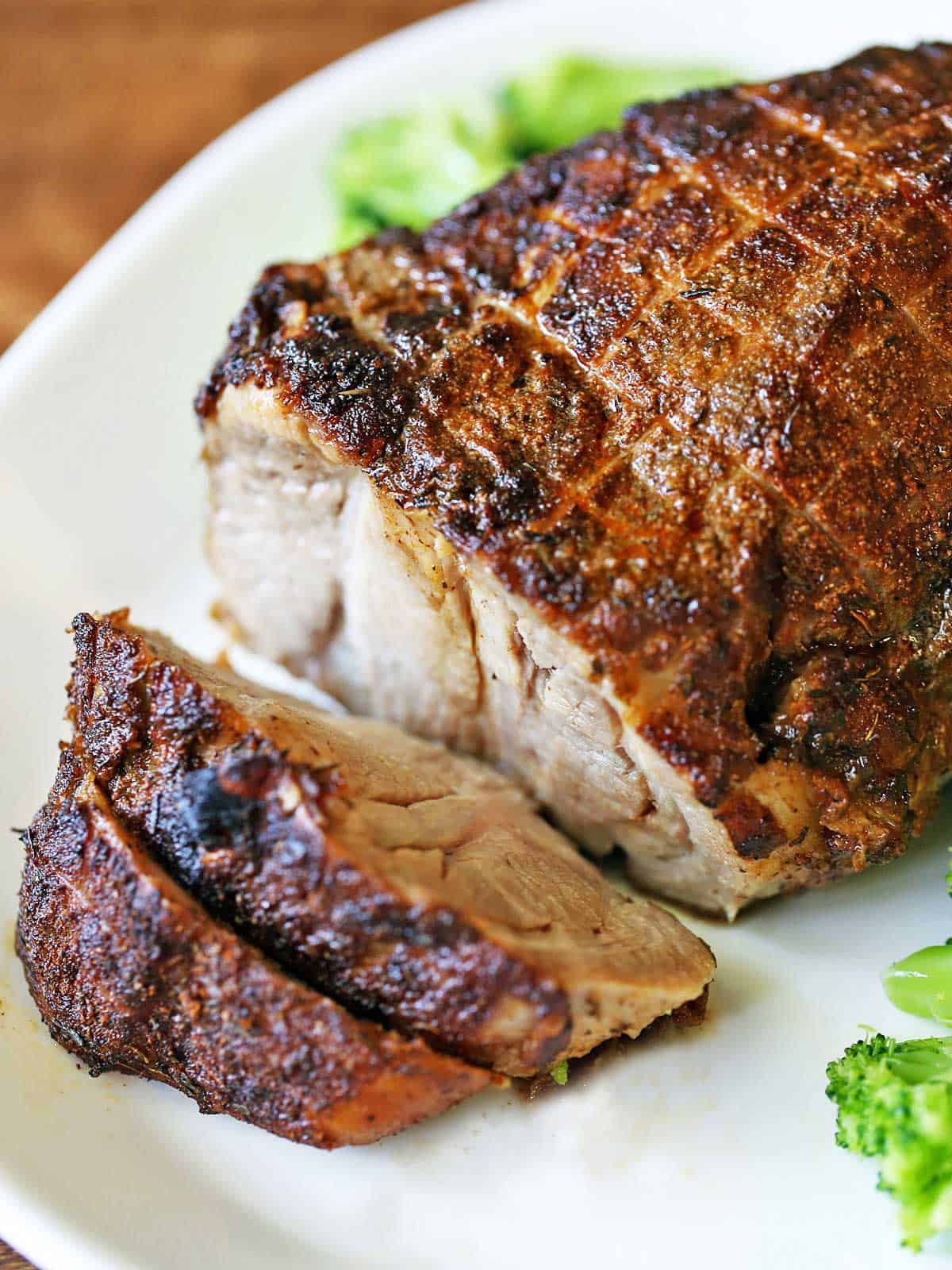
I love making roasts for dinner. Much like casseroles, they provide lots of food for minimal work - they practically cook themselves. When it comes to pork, although I enjoy pork chops, this pork roast is easier to make. You simply rub the meat with seasonings, then bake it until it reaches an internal temperature of 145°F. Basically, the oven does all the work!
Ingredients and Variations
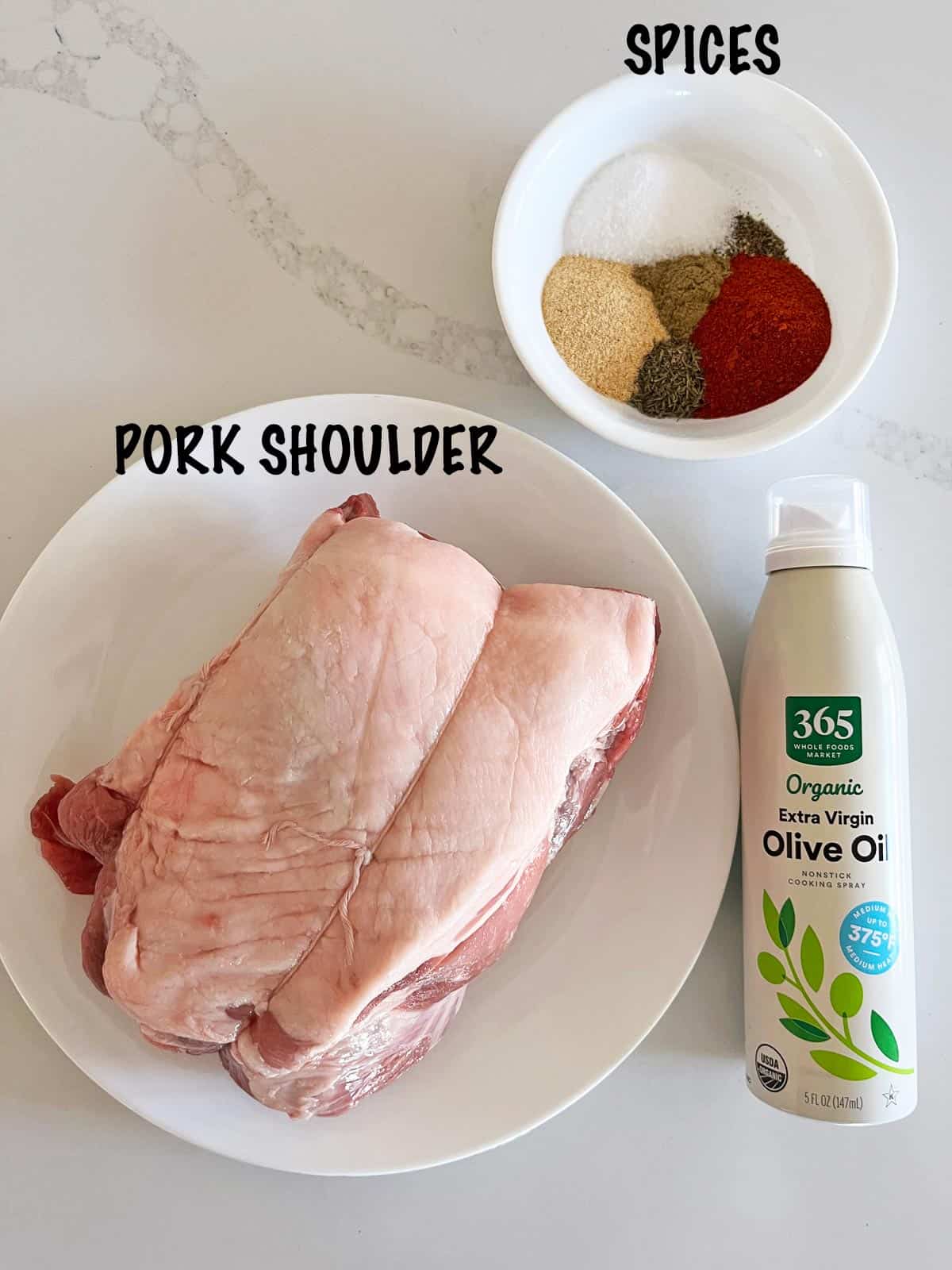
See the recipe card for exact measurements. Here are my comments on the ingredients.
- Olive oil spray: I love the flavor of olive oil and use it frequently. If you prefer an oil with a higher smoke point, use avocado oil.
- To season: Kosher salt, black pepper, garlic powder, paprika, dried sage, and dried thyme. I prefer garlic powder to minced fresh garlic - it more evenly coats the meat.
- Boneless pork shoulder: I typically use a 3-pound boneless pork shoulder butt roast from Whole Foods Market. I prefer a boneless roast because it's easier to slice and serve, but you can use this recipe with a bone-in roast.
The best way to vary this recipe is to experiment with different spices. Good options include onion powder, dried oregano, ground cumin, and ground mustard. You can add ½ to 1 teaspoon of any of these to the spice mixture.
Instructions
The detailed instructions and step-by-step photos are included in the recipe card. Here's a quick overview.
Prepare the spice mixture: Mix the kosher salt, black pepper, garlic powder, paprika, sage, and thyme. Rub the mixture over the pork and spray the top liberally with olive oil.
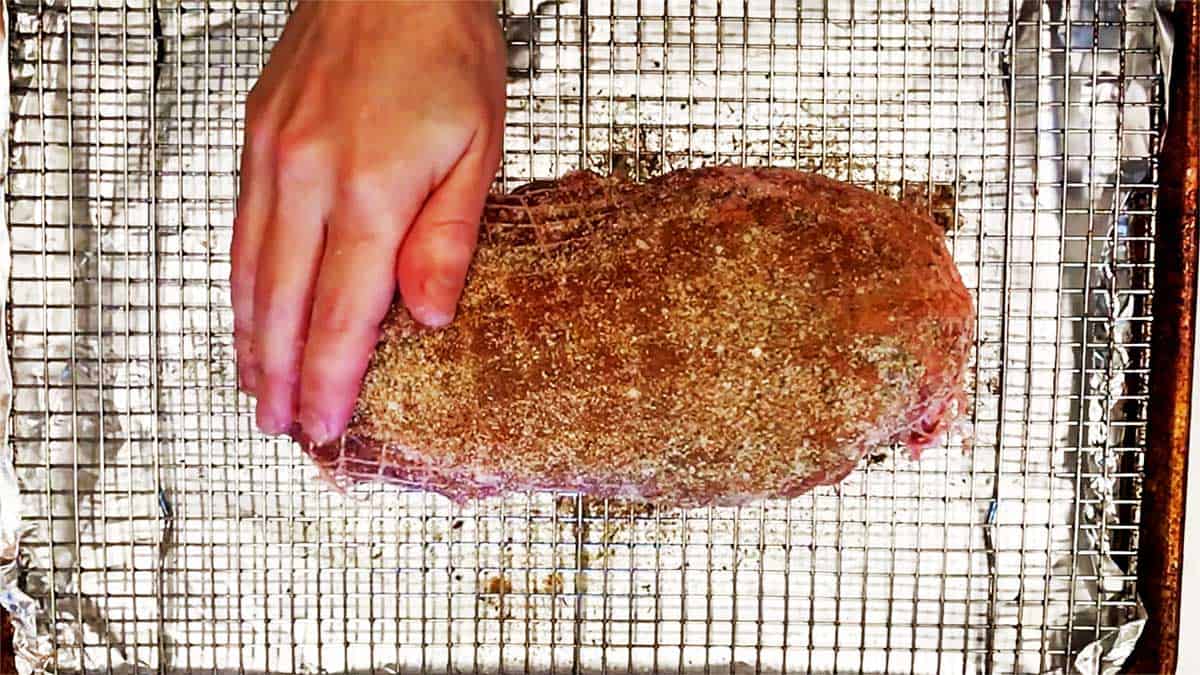
Cook the pork for 15 minutes in a preheated 425°F oven. Lower the oven to 375°F and continue roasting the pork to an internal temperature of 145°F for about 75 more minutes. When done, it will be beautifully browned, as shown in the photo below.
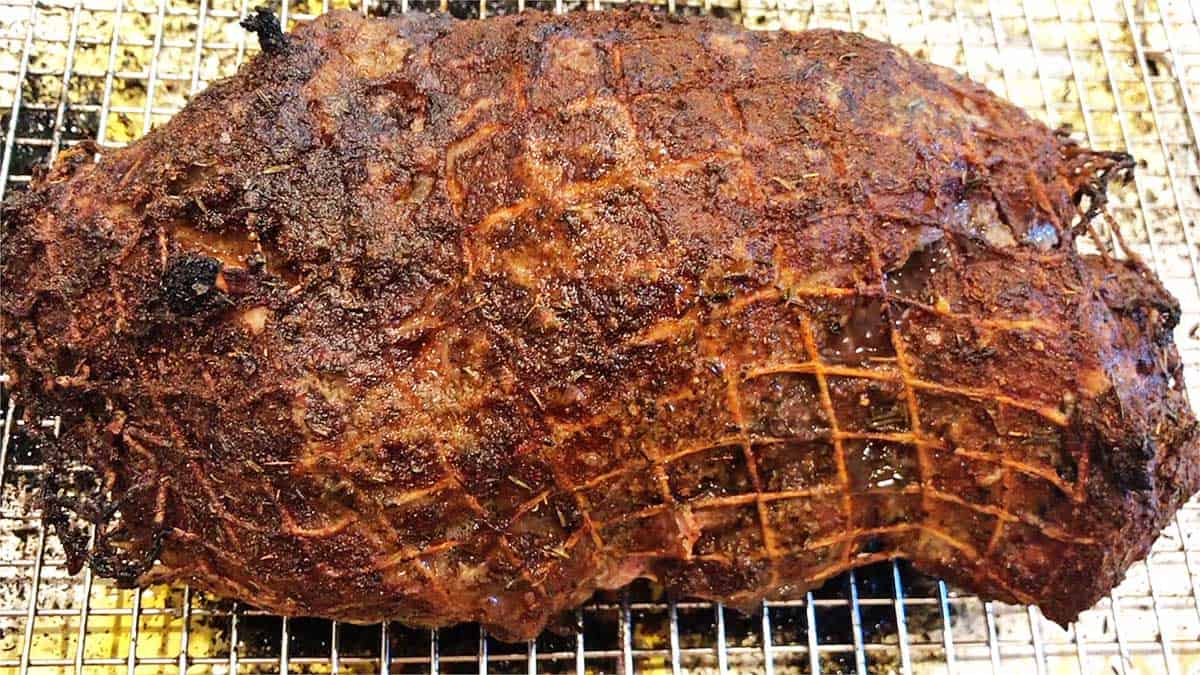
Let the pork rest for 20 minutes before slicing and serving.
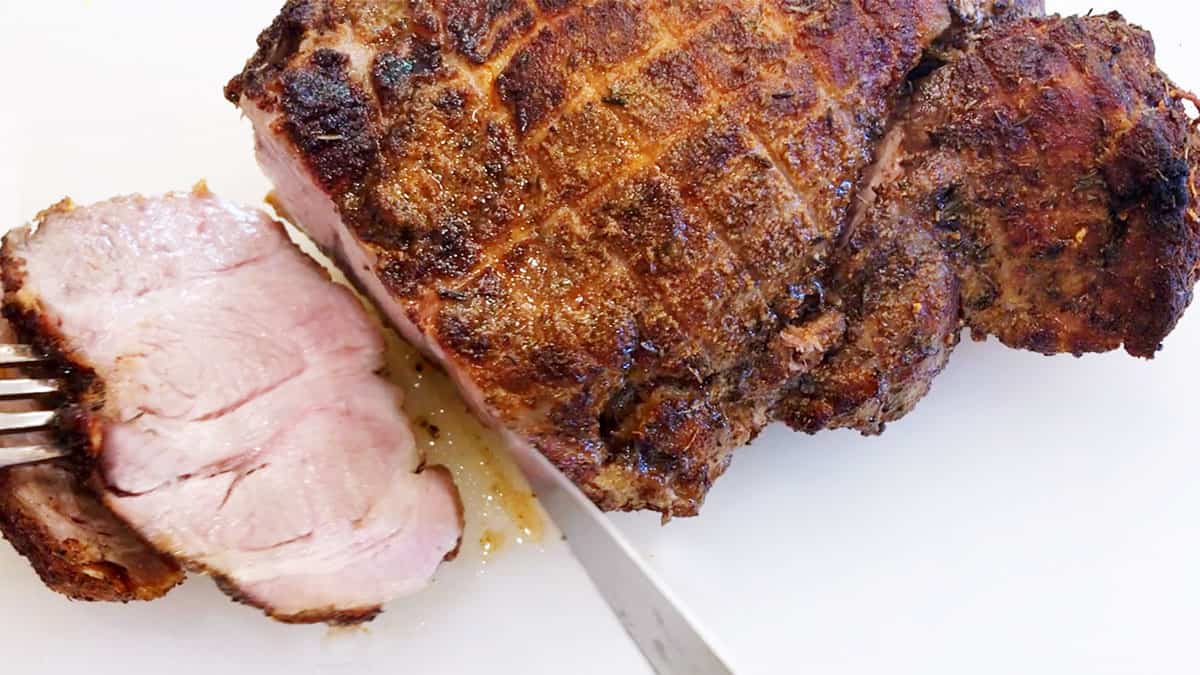
Wow. Just wow. I bought a pork roast because it was on sale and had no clue what I was going to do with it. A Google search brought me here and, well, thank you Google! Not only was this really easy, it’s tender, juicy, and amazingly tasty. Definitely going into my “make again” file.
Linda
Read more comments
Recipe Tips
- It's very important to allow the fully cooked roast to rest for at least 20 minutes before slicing it. This allows the juices to redistribute and settle. If you cut into the roast too soon, juices will be lost, and the pork will end up dry and not as flavorful.
- You should keep the roast uncovered in the oven. You want it nicely browned. However, if your roast is big and the top is getting too dark while the inside is not yet fully cooked, loosely cover the top with foil to protect it from over-browning.
- Storage tips: You can keep the leftovers in an airtight container in the fridge for 3-4 days. Reheat them, covered, in the microwave at 50% power. They won't be as good as the freshly prepared roast, but they will still be delicious. You can also freeze the cooled leftovers in freezer bags for up to three months. Thaw them overnight in the fridge before reheating them.
Recipe FAQs
After the first 15 minutes of browning the roast in a hot oven, a rough estimate is to keep cooking it for approximately 25 minutes per pound. But this is just an estimate.
As with all roasts, including ribeye roast and beef tenderloin roast, it's important to use an oven-safe meat thermometer that you insert into the roast and that alerts you when it's fully cooked. There's no other reliable way to make sure the roast is done. This is especially important with pork because the lowest internal temperature you want it to reach is 145 degrees (medium).
I usually get a 3-pound pork shoulder. If your roast is bigger, increase the cooking time accordingly. If the top seems to be getting too dark, loosely cover it with foil.
No. In 2011, the USDA lowered its temperature recommendation for cooking whole cuts of pork from 160°F (completely white meat, which can be quite dry) to 145°F (juicy and slightly pink in the center) with a 3-minute rest period.
The pork may still look slightly pink when it reaches 145 degrees. After years of being conditioned to expect pork to appear white when fully cooked, this change is not easy for many of us. But this is a good change: meat cooked to medium is juicy, while well-done meat is dry.
I prefer a boneless roast because it's easier to slice and serve. The only disadvantage is that once it's done, you don't have bones to use for a tasty soup. However, you can use this recipe with a bone-in roast. Make sure it's fully cooked with an oven-safe meat thermometer, not touching the bone.
I don't recommend using pork loin. Although tender, it's lean and will dry out during prolonged cooking. You should stick with pork shoulder, a fatty cut that won't dry easily. See the photo below? This is a roast I made with pork loin a few years ago. It was my first and last! It's easy to see how dry it is compared to a shoulder roast.
Serving Suggestions
This roast is rich and flavorful, so I like to keep the sides simple. Here are a few of the easy side dishes I usually serve with it:
Recipe Card
Easy Pork Roast
Video
Ingredients
- Olive oil spray
- 1 tablespoon Diamond Crystal kosher salt - or ½ tablespoon of any other salt, including Morton kosher salt
- ½ teaspoon black pepper
- 1 tablespoon garlic powder
- 1 tablespoon paprika - regular or smoked
- 1 teaspoon dried sage
- 1 teaspoon dried thyme
- 3 pounds boneless pork shoulder butt roast
Instructions
- Line a rimmed baking sheet with foil and fit it with a wire rack. Spray the wire rack with olive oil.
- In a small bowl, mix the kosher salt, black pepper, garlic powder, paprika, sage, and thyme.
- Pat the pork dry with paper towels. Place it on the wire rack. Rub the spice mixture all over the roast. Spray its top liberally with olive oil.
- Heat the oven to 425°F. Let the roast sit at room temperature while the oven is warming, about 30 minutes.
- Insert an oven-safe meat thermometer probe into the middle of the roast and place it in the hot oven. Roast it for 15 minutes, then lower the heat to 375°F and continue roasting until the thermometer reads 145°F. In my oven, it takes 75 minutes (about 25 minutes per pound).
- Remove the roast from the oven. Loosely tent it with foil and allow it to rest for 20 minutes, then slice and serve. If your roast came tied in butcher twine, carefully remove the twine before slicing.
Notes
- You can use this recipe with a bone-in roast. Make sure it's done with an oven-safe meat thermometer, not touching the bone.
- As with all roasts, it's important to use an oven-safe meat thermometer that you insert into the roast and alerts you when it's fully cooked. There's no other reliable way to make sure the roast is done.
- If your roast is larger than 3 pounds, you will need to cook it for longer. A general rule of thumb is 25 minutes per pound. Its internal temperature should reach 145°F. If the top seems to be browning too much after the initial 75 minutes, loosely cover it with foil.
- I don't recommend using pork loin. Although tender, it's lean and will dry out during prolonged cooking. You should stick with pork shoulder, a fatty cut that won't dry easily.
- It's important to allow the fully cooked roast to rest for at least 20 minutes before slicing it. This allows the juices to redistribute and settle. If you cut into the roast too soon, yummy juices will be lost, and the meat will end up dry and not as flavorful.
- You can keep the leftovers in an airtight container in the fridge for 3-4 days. Reheat them gently, covered, in the microwave at 50% power. You can also freeze the cooled leftovers in freezer bags for up to three months. Thaw them overnight in the fridge before reheating them.
- The nutrition info is based on the USDA database.
Nutrition per Serving
Save this Recipe!
We will also add you to our weekly newsletter. Unsubscribe anytime. See healthyrecipesblogs.com/privacy/ to learn how we use your email.
Disclaimers
Most recipes are low-carb and gluten-free, but some are not. Recommended and linked products are not guaranteed to be gluten-free. Nutrition info is approximate. Please verify it independently. The carb count excludes non-nutritive sweeteners. Please read these Terms of Use before using any of my recipes.

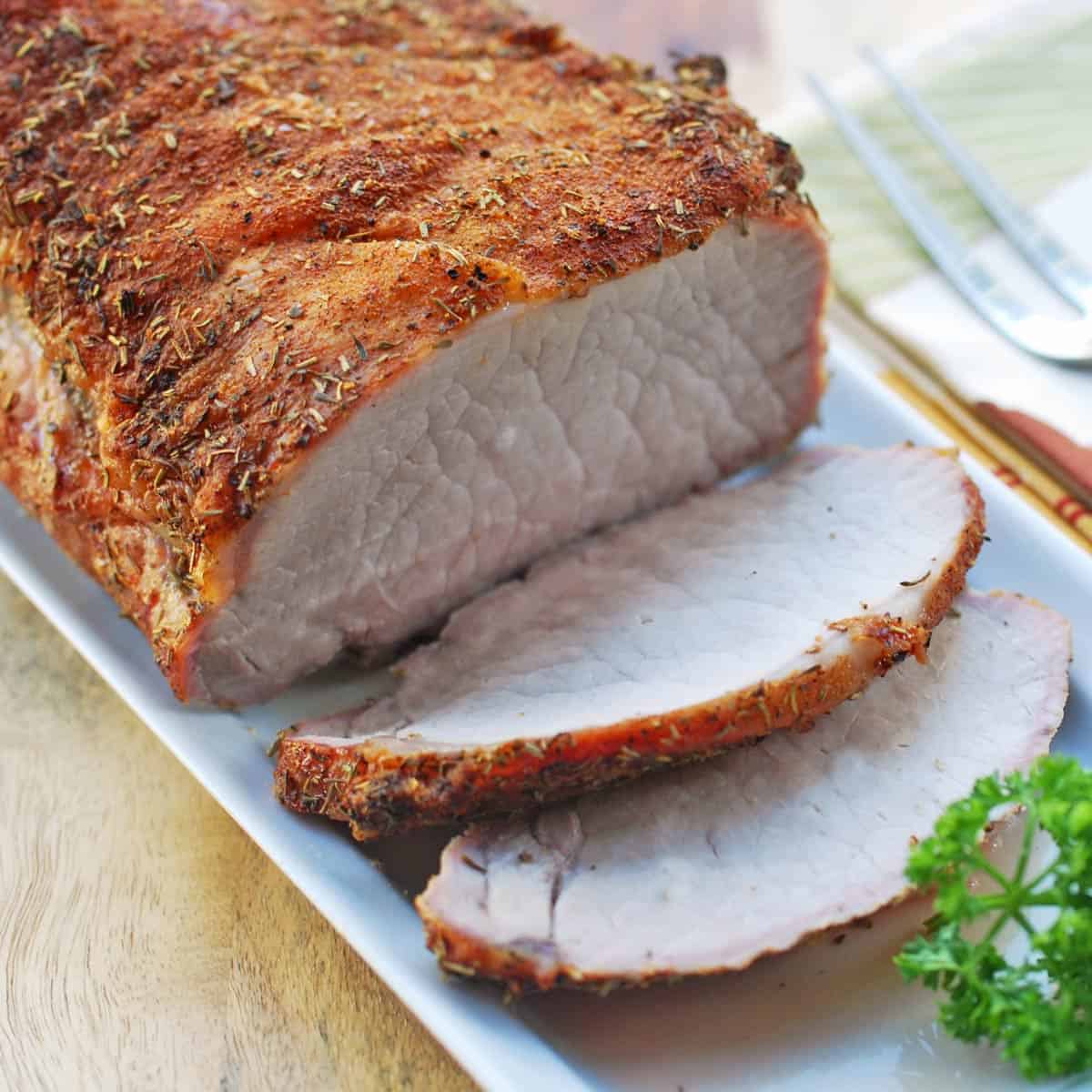

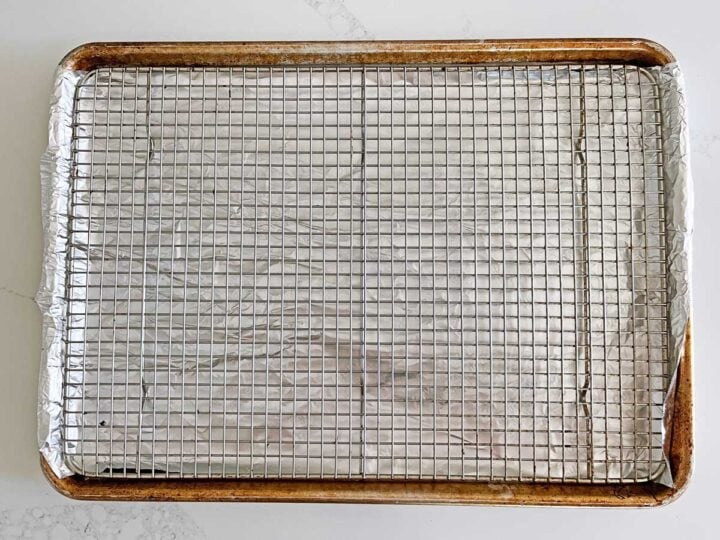
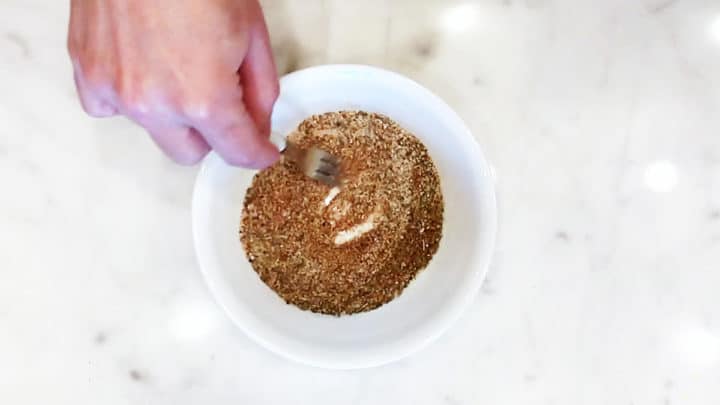
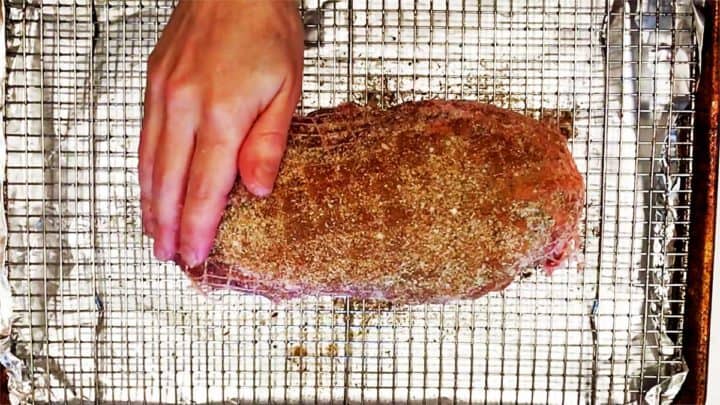
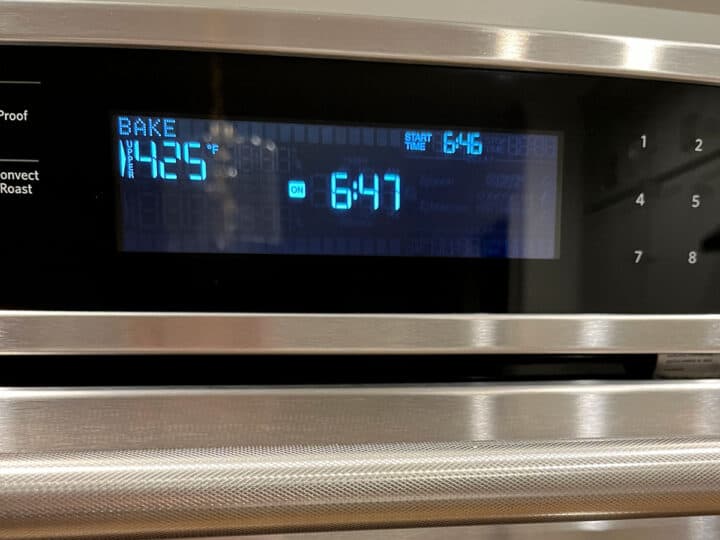
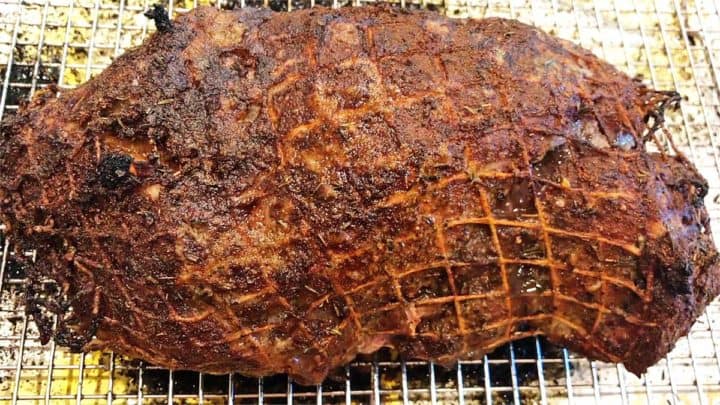
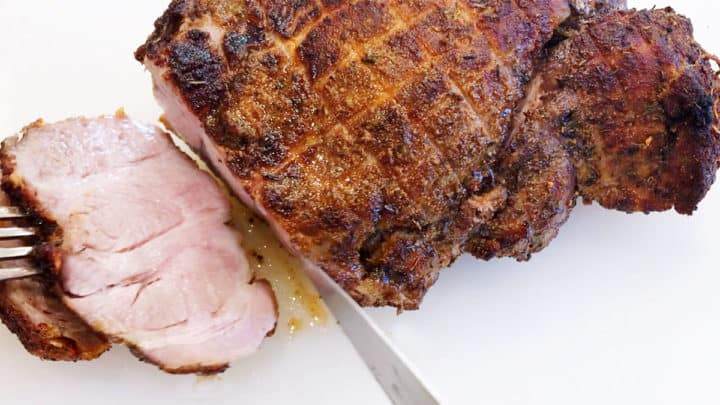

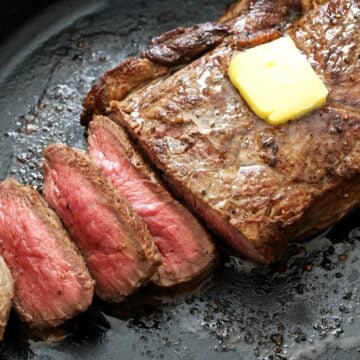

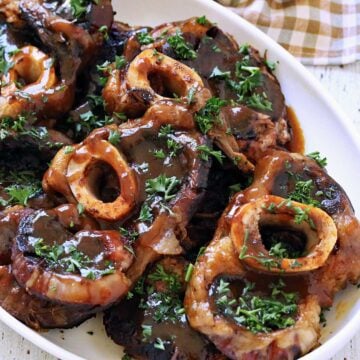
Joanna says
This was so good. I will definitely make it again. The rub is a tasty combination of seasonings. For me, the paprika was the star ingredient that really gave it the best flavor. The roast came out moist and the leftovers were still moist the next day. It really is an easy way to cook a pork roast and I will be using it again. Thanks for the recipe.
Vered DeLeeuw says
You're very welcome, Joanna! Many thanks for the review.
Sue says
I am making it for the third time. That says it all!
Vered DeLeeuw says
Wonderful, Sue! I'm so glad you like this recipe so much. Thank you very much for the review.
Susan says
Thank you so much! This is the best pork roast my husband and I ever had ( that says a lot since we have been married 45 years !) I took the roast out at exactly 145 degrees. The rub was phenomenal, the roast was amazingly tender and it made a lot of juice. Absolutely perfect!
Vered DeLeeuw says
Wonderful, Susan! I'm so glad this was such a huge success. Thank you very much for the review.
45 years - wow! How blessed you are.
Jim says
It was great - will definitely make again. Wouldn't change a thing.
Vered DeLeeuw says
Wonderful, Jim! I'm so glad you enjoyed this recipe. Thank you very much for the review.
Rosa says
This was easy and delicious, thanks!
Vered DeLeeuw says
You're very welcome, Rosa!